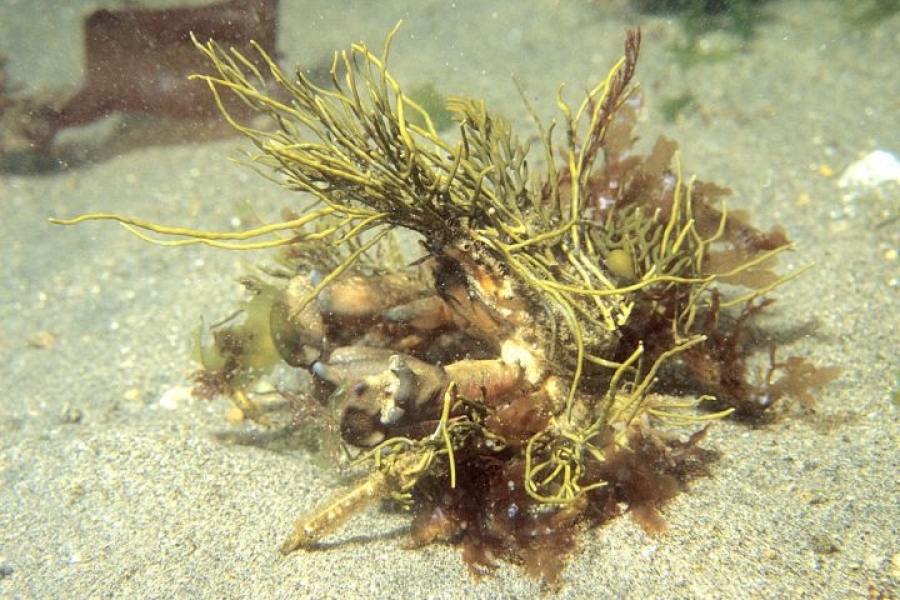The decorator crabs, or camouflaged crabs, are very different creatures from the paddle crab. They’re slow movers that rely on disguise to evade predators, decorating their shells with whatever flotsam and jetsam comes to claw.
The decorator crabs, or camouflaged crabs, are very different creatures from the paddle crab. They’re slow movers that rely on disguise to evade predators, decorating their shells with whatever flotsam and jetsam comes to claw. The hairy seaweed crab is the most common decorator crab seen in New Zealand rock pools, and one of 43 known spider crabs found in New Zealand waters. It can be found in the intertidal zone all around New Zealand, usually hiding under boulders in amongst brown seaweed. Although you can find it during the day, it’s most active at night (another predator-avoidance strategy).
As with all decorator crabs, this species has stiff hairs known as ‘hook setae’ all over the upper side of its body and legs. “These act like Velcro – the crab simply grabs stuff and hooks it on,” says Dr Ahyong.
“You’ll often find small crustaceans living amongst the seaweeds on its back, along with worms and sponges. The sponges could also help in defence, because of the neurotoxins they contain.”
The hairy seaweed crab’s tropical cousins will decorate their bodies with soft corals and anemones.
“They need the camouflage, because they’re pretty slow moving and don’t have powerful claws,” says Dr Ahyong. “They only eat dead or dying stuff, because they’re too slow to catch live animals.”
“When they shed their shell, they’ll sometimes remove their decoration and attach it to their new shell.”
All crabs shed their shells to grow. They do this, on average, every few months. The warmer the water and the younger the crab, the faster they grow and, therefore, moult.
New Zealand waters are home to 170 known species of crab, but there are undoubtedly more out there waiting to be discovered.
Scientist bio:
Dr Shane Ahyong is a taxonomist (a scientist who formally identifies and describes species) at NIWA in Wellington. He is one of 18 experts who recently revised the classification of all the world’s decapod species (which includes crabs), whose numbers now stand at more than 14760. He formally named eight new New Zealand crab species last year, and has descriptions of another ten new crab species in the pipeline.
|
Species Fact file |
|
|
Common names: |
Hairy seaweed crab |
|
Scientific name: |
Notomithrax ursus |
|
Type: |
Spider crab |
|
Family: |
Majidae |
|
Size: |
up to 5 cm shell length |
|
Lifespan: |
2 years |
|
Diet: |
Omnivorous scavengers – eat decaying seaweed, mussels and dead paua. |
|
Reproduction: |
Female lays fertilised eggs, from which larvae emerge. There are several larval stages. |
|
Things you need to know: |
Most common crab seen in NZ rock pools – hides under boulders and amongst seaweeds. |
|
Something strange: |
Decorates its shell and legs with seaweeds and sponges. Will often recycle this decoration when sheds shell. |

